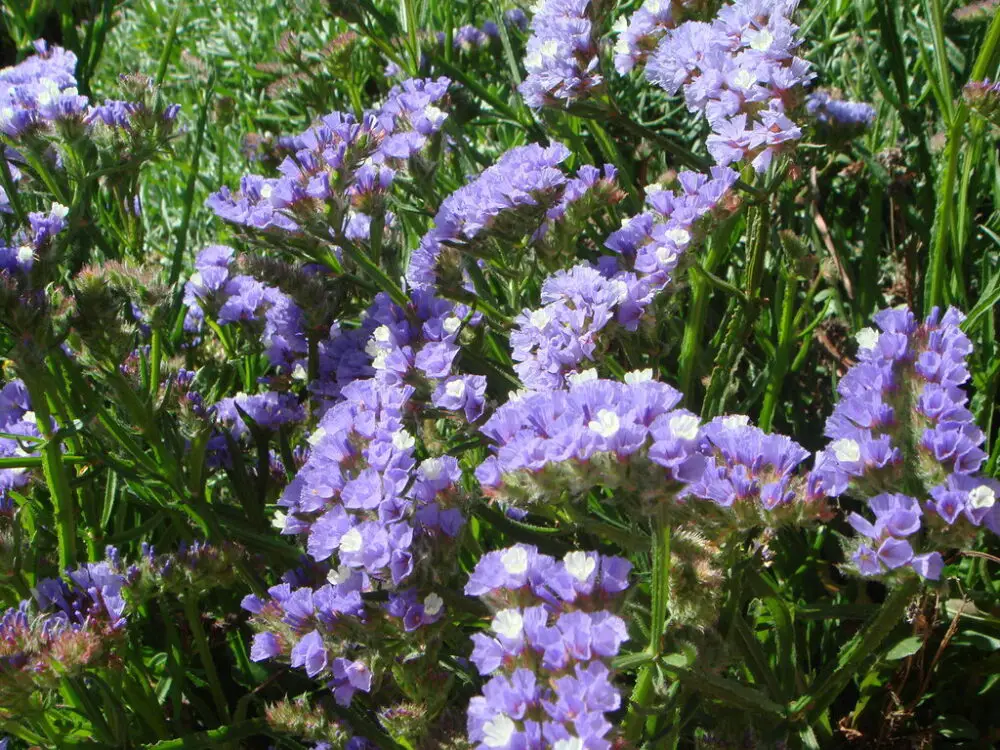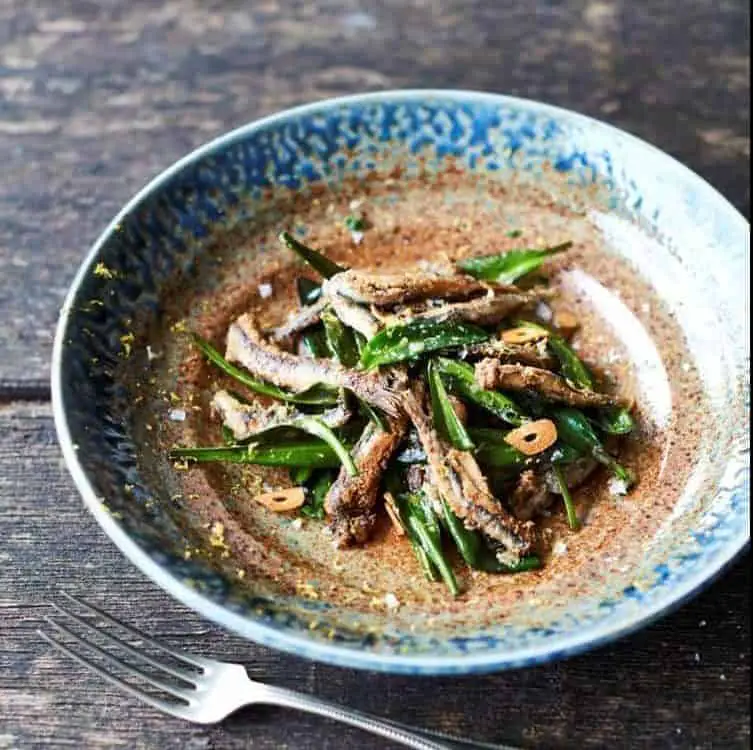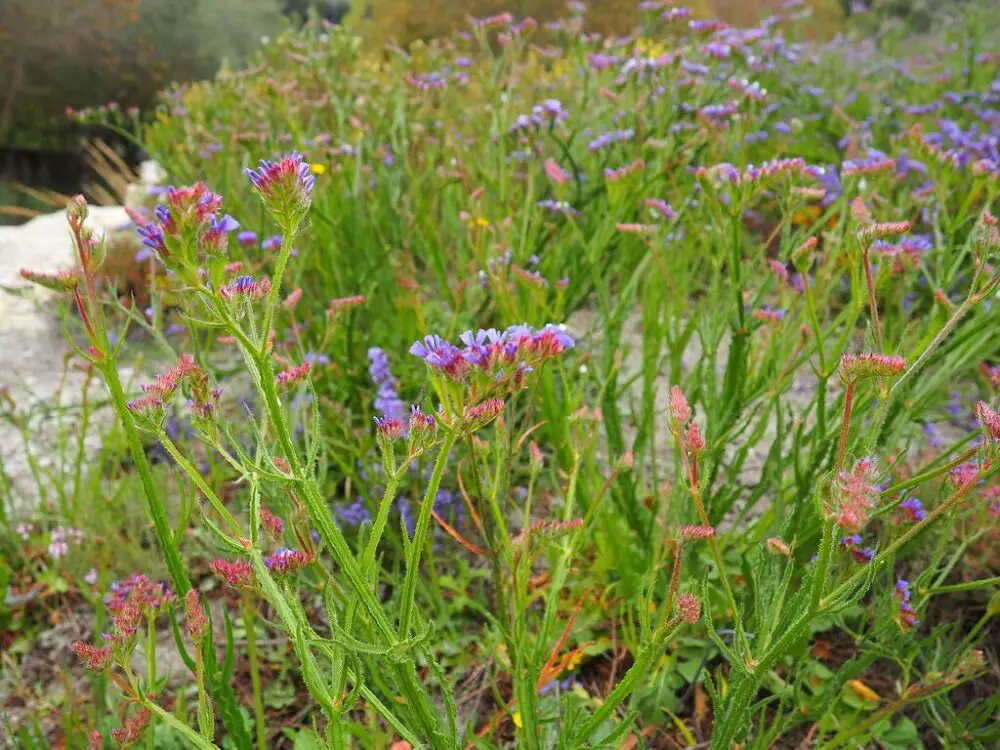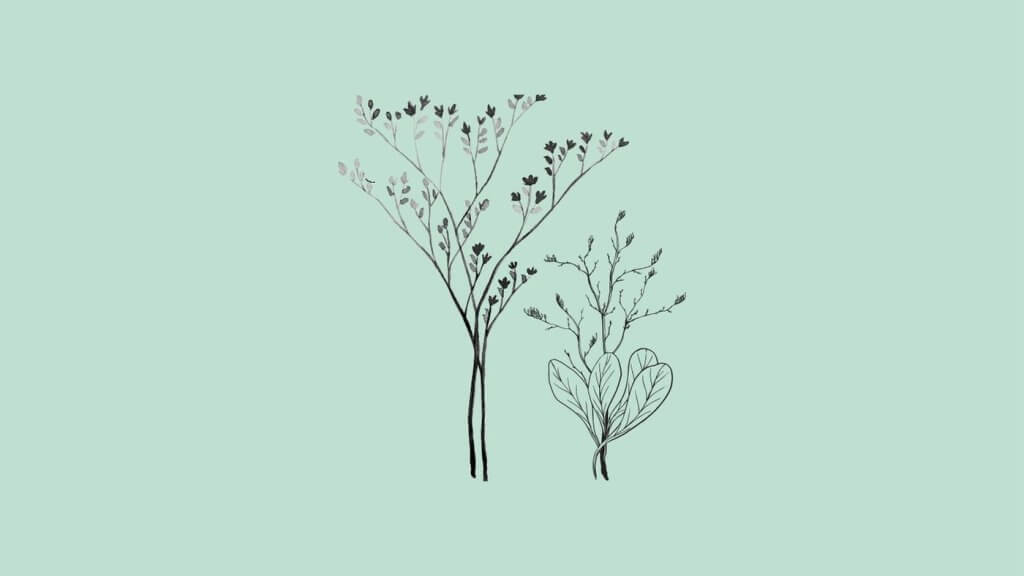Limonium sinuatum, also known as wavyleaf sea lavender, statice, or sea lavender, is a papery textured coastal perennial herb that produces lavender-blue flowers and leathery green leaves. It is used in dried arrangements due to its thick clusters of funnel-shaped flowers and is a popular ornamental plant.
Limonium sinuatum: plant profile
| Scientific name | Limonium sinuatum |
| Kingdom | Plantae |
| Family | Plumbaginaceae, from the plumbago or leadwort family |
| Plant type | Herbaceous perennial |
Common names include:
- wavyleaf sea lavender
- statice
- sea lavender
- notch leaf marsh rosemary
- sea pink
The plant’s scientific name comes from the Greek word “leimon”, which means “a meadow”.
The wavyleaf sea lavender is a short-lived perennial often treated as an annual. Approximately 10 cm (3.9 in) long, the leaves are pinnate, lobed, and lance-shaped. It has downy parts on all sides.
What Are You Foraging For Right Now?
We're thrilled to hear your ideas. What would you like to submit today? Feel free to share your thoughts and experiences with us.
Winged flower stems are about 70 cm (28 inches) tall and appear in summer. White, pink, purple, and yellow flowers appear in short, papery clusters and have been known to become invasive.
These flowers are known for their long-lasting color. Despite the fading of the central corolla, the paper-like calyces last for weeks.
Perhaps the long-lasting nature of the flowers makes them symbols of memory and remembrance. Long ago, when given as a gift, sea lavendermeant “I miss you” during the Victorian era.
In other cultural traditions, sea lavender signifies sympathy so wreaths and bouquets with Limonium are often placed on grave sites. You can also use it to wish for success.

Is Limonium sinuatum poisonous?
Humans cannot be poisoned by sea lavender, and there has been no report of toxic effects. The filler flower is also considered safe for dogs, cats, and horses.
Pollinators such as bees and butterflies are attracted to the brightly colored clouds of flowers.
Is Limonium sinuatum edible?
Although the entire sea lavender plant is considered edible, it is more often used decoratively.
Interesting fact: If you think it’s sea aster but find the taste and texture disappointing, you probably have sea lavender.
Can you cook with sea lavender?
There are many delicious dishes one can make that include cooked sea lavender as a garnish, including:
- Grilled fish
- Pasta
- Stir fry
The seeds of the sea lavender can also be used as a replacement for pepper. Be careful not to overcook them as they can become very soft.
Recipes to try:

What does Limonium sinuatum smell like?
Although common sea lavender looks and smells like lavender, it is not actually a true lavender. A modest sweet, aromatic scent emanates from its flowers, and walking across a beach’s warm sand and smelling that scent is a delightful experience.
The scent of this plant is appreciated differently by different people. Some find it pleasant, and some find it offensive.
Sea Lavender: other uses
Traditionally, this plant has been used in folk medicine and folk traditions. There are many ailments that it can treat, including:
- gastrointestinal issues
- laryngitis
- bronchorrea
- pulmonary hemorrhage
- internal injuries
- urinary problems
- cleansing the blood
- the roots may be used as a decongestant
The sea lavender plant is also widely grown as an ornamental plant. The cut flower industry also cultivates it, using it as a filler for fresh-cut flower or dried flower arrangements.

Where does it grow in nature?
Statice flowers are native to the Mediterranean region, Western Asia, and northern Africa. Spain, Turkey, Israel, North Africa, and the Canary Islands are all home to this plant.
In its natural range, statice flowers grow near the sea, hence the name “sea lavender.” The plant thrives in salty soil and harsh coastal conditions many other plants cannot endure.
The flower’s bloom time is during the summer months in temperate regions. In warmer climates, the plants may “free flower,” or bloom sporadically throughout the year.
Sea Lavender: Growing & Plant Care Tips
It is possible to grow sea lavender in USDA plant hardiness zones 3 to 9.
Tips for growing sea lavender:
- In most areas, plant sea lavender in full sun. In hotter climates, the plant benefits from afternoon shade. Sea lavender thrives in sandy soil but tolerates average, well-drained soil and can be planted in a rock garden.
- Water new plants regularly; once established reduce watering because sea lavender is drought-tolerant.
- Divide statice every two to three years in early spring, but dig deep to avoid damaging the roots. Dividing sea lavender can be a challenge. It may be necessary to stake taller plants to keep them upright.
- The color of sea lavender changes from green to brown in the fall and winter, which is normal and isn’t cause for concern.
- If you would like to make room for spring growth, feel free to remove dead leaves.
Ana has always been interested in all things nature and flora. With her expertise in home gardening and interest in foraging, she has been spending her weekends and free time looking for edible native plants, flowers, and fungi. One of her many hobbies includes testing new savory and sweet recipes, juices or teas made from freshly picked plants, wild fruits, or mushrooms.

